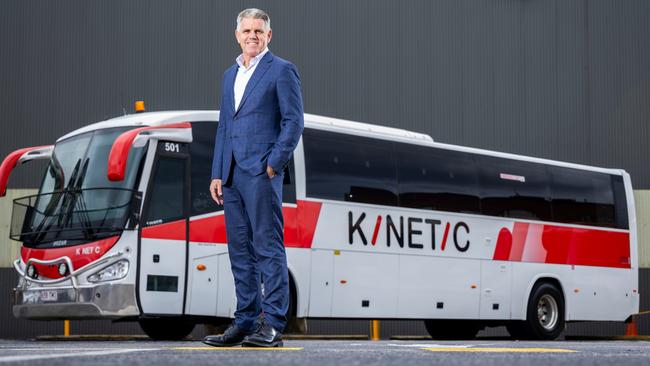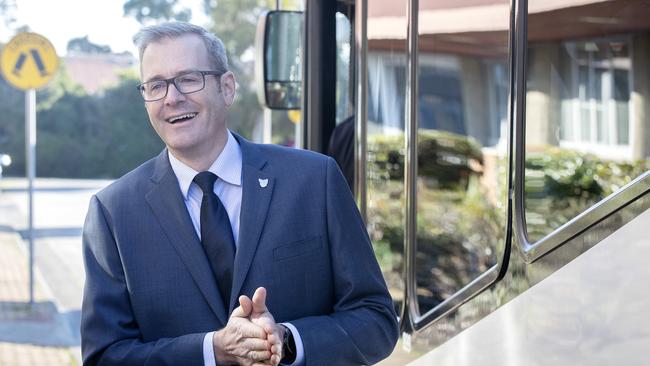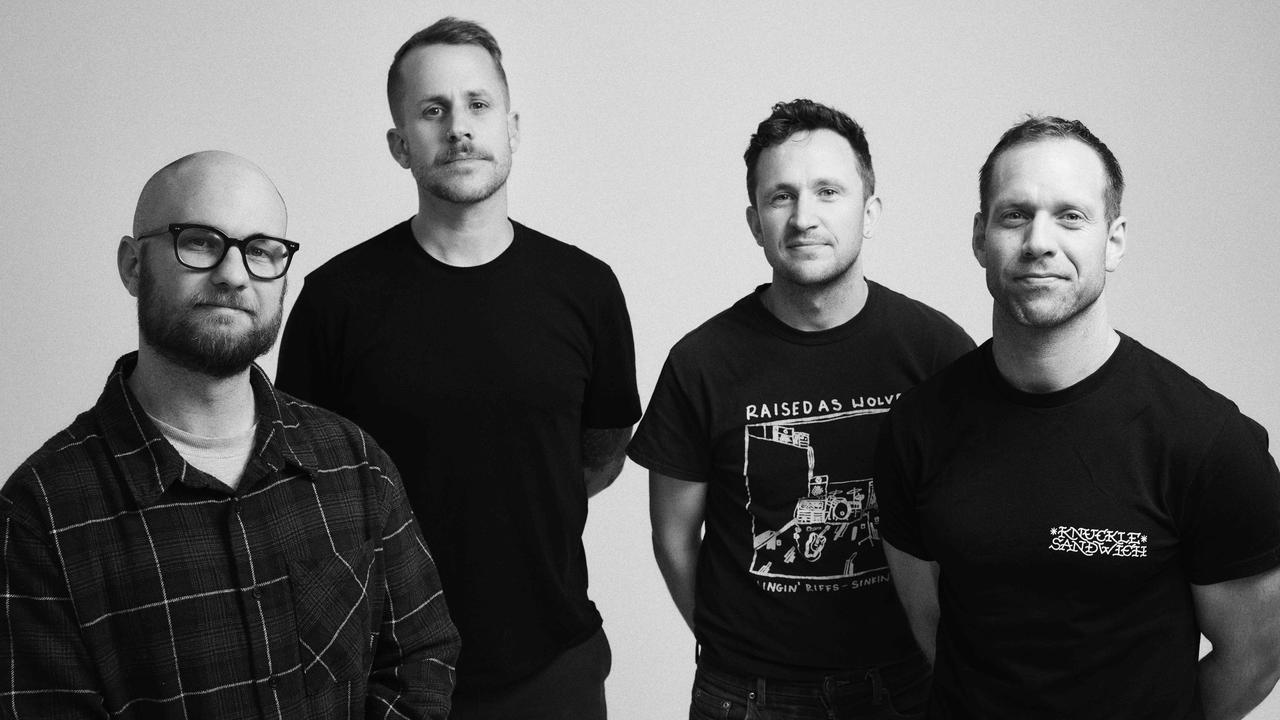Kinetic: Australia’s biggest bus company quietly amasses huge Tasmanian fleet, plans further growth
Without great fanfare, the country’s leading bus operator, Kinetic, has taken over five long-running Tasmanian services and now boasts a fleet bigger than that of Metro Tasmania.

Tasmania
Don't miss out on the headlines from Tasmania. Followed categories will be added to My News.
Australia’s biggest bus operator has quietly become a major player in the state’s transport landscape, buying up a number of local legacy companies and amassing a fleet larger than Metro Tasmania’s in the space of just six years.
Kinetic had its inception in 1978 with the launch of the SkyBus airport transit service in Melbourne and has since grown into a global juggernaut, running bus and rail networks across Europe, the UK, and Asia.
While it boasts a 5000-strong fleet across Australia and New Zealand, it was only in 2018 that the business entered the Tasmanian transport market, commencing a SkyBus service from Hobart Airport to the waterfront.
Since then, Kinetic has bought out five long-running homegrown bus operators – Redline, Merseylink, O’Driscolls Coaches, Sainty North East Bus Service, and East Tamar Bus Line – and now provides 132 services right across the island, including 99 school bus routes.

The company’s rapid expansion has occurred with little fanfare but it now has more than 260 buses in Tasmania. According to Metro’s latest annual report, its own fleet numbers 230.
Kinetic co-CEO, Michael Sewards, said the business had made a point of investing heavily in modernising its Tasmanian depots, improving facilities, and diversifying its workforce.
“We’ve spent $10m so far on our depots [in Tasmania] and want to spend some more,” he said.
“[At] the Hobart depot, we’re going through a reconstruction now that will have electric bus infrastructure in it ready to go. It’s just commonsense, right?”
Kinetic launched the state’s first two battery electric buses on its SkyBus service in 2022 and has ambitions of rolling out further electric vehicles in the coming years, with a target of achieving net zero emissions in its global operations by 2035.
The company has also set a goal of reaching 50 per cent female employment by the beginning of the next decade and Mr Sewards said the Tasmanian business currently had the greatest proportion of female staff across its entire Australasian operations.
Kinetic’s rise in Tasmania has come as the state’s public transport provider, Metro, grapples with a national driver shortage, leading it to indefinitely suspend 180 services in Greater Hobart.
Opposition MPs and unions have accused the state government of deliberately running the state-owned company into the ground as part of a plan to sow the seeds for privatisation, with Kinetic often mentioned as a potential candidate to take over some or all of Metro’s routes.
However, Infrastructure and Transport Minister Michael Ferguson last year ruled this out, saying the Rockliff government would “retain Metro as state-owned”.

Mr Sewards said Kinetic had not had discussions with the government about the possibility of taking on some of Metro’s services but if there was a change of government policy, the company would “be putting our hand up to be part of a procurement process”.
“Sometimes there are discussions about privatisation versus private ownership [but] I think there’s a balancing act there,” he said.
“We’ve got many services around Australia, in major capital cities, where governments … continue to own [transport] assets. In fact, in two or three states, they own all the assets – buses and depots – and they set all the rules, so to speak, but the private operators run the service. So that’s a hybrid model.
“There are other models, if you look at Queensland, NSW, and Victoria, where the operators own the assets but they work effectively with an integrated ownership model with government and the operator runs the service.”
Kinetic has also been touted as a leading candidate to run the government’s proposed bus rapid transit (BRT) service in Hobart, which will involve a network of buses operating on road corridors from the North, South, and East, including the Northern Suburbs Transit Corridor.
Mr Ferguson has indicated that the government will put the contract for the service to tender, meaning it could be snapped up by a private business.
Mr Sewards said a BRT service would be “fabulous” for Hobart, describing it as a “fantastic offering”.

“We operate some pretty large-scale bus rapid transit offerings around the world,” he said.
“We’d love to put our hand up if and when the opportunity arose [in Tasmania] – definitely. Particularly, as a local operator who has good knowledge of the market but also bringing to that [our] national experience.”
According to Mr Sewards, Kinetic is yet to cancel a single service in the state because of a lack of staff and its operational capacity is currently at about 95 per cent. He said while the company was not actively pursuing further expansion opportunities in Tasmania, it was always looking for ways to increase its patronage.
“Fundamentally, if we’re not growing patronage, we’re not going to sustain the business,” he said.
“So where we see opportunities where there’s either a gap in the service offering or where we can provide something better that ends up in a more sustainable business, or a business is just not investing in their people or their assets, and we think we’re actually going to [make] some difference and make a change, then, yeah, we’ll look at it.”
More Coverage
Originally published as Kinetic: Australia’s biggest bus company quietly amasses huge Tasmanian fleet, plans further growth





